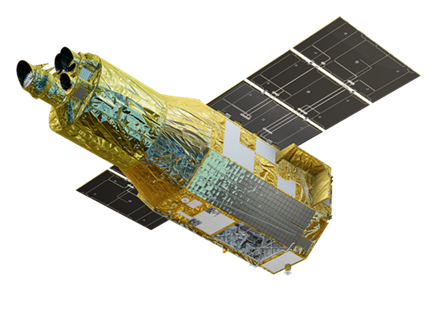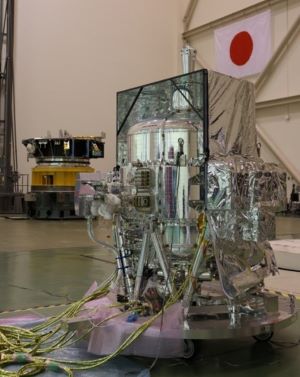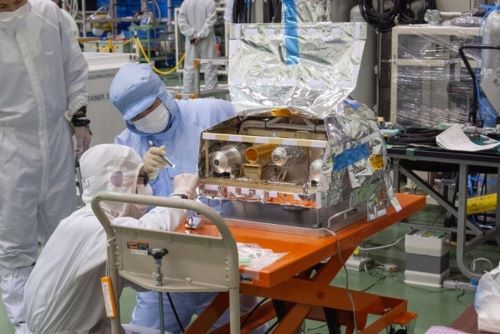SHI Joins in the Development of Observational Instruments for JAXA’s X-ray Imaging and Spectroscopy Satellite “XRISM”
September 11, 2023
Sumitomo Heavy Industries, Limited (Head Office: Shinagawa-ku, Tokyo; Representative Director, President, and CEO: Shinji Shimomura) played a role in the development of two instruments onboard XRISM, an X-ray imaging and spectroscopy satellite developed by the Japan Aerospace Exploration Agency (JAXA): the soft X-ray spectrometer Resolve (X-ray microcalorimeter) and the soft X-ray imager Xtend (X-ray CCD camera). XRISM was launched aboard the H-IIA Launch Vehicle No. 47 from JAXA Tanegashima Space Center on September 7, 2023.

Resolve is an observation instrument that measures energy intensity by utilizing minute increases in temperature occurring when X-rays strike elements. This makes it possible to measure the temperature and composition of an observed X-ray object with great precision.
Cooling to an uitralow temperature of 0.05K (-273.1°C) is needed to improve the energy resolution of the instrument’s sensing component. This is achieved with an adiabatic demagnetization refrigerator developed by NASA and a cooling system consisting of SHI products—namely, a superfluid liquid helium tank,*1 a 2-stage Stirling refrigerator,*2 a 4K Joule-Thomson refrigerator,*3 and their drive electronics.

Xtend is capable of imaging by capturing X-rays from celestial objects in the same way as a visible-light telescope. X-ray CCD must be cooled to 160K (about -110°C) to increase the sensitivity. SHI’s single-stage Stirling refrigerator*4 and its drive electronics are used for this purpose.

XRISM will strive to shed light on the universe’s origin and the hidden physical phenomena of the cosmos through observations with X-rays. It is anticipated that Resolve and Xtend, instruments built with SHI cooling systems, will discover previously invisible aspects of the universe.
SHI has been developing cryogenic technologies for 60 years. We fully leveraged these technologies in producing the compact and highly reliable cooling systems we delivered to XRISM. As we aim for even higher technological capability, we will continue being a technical contributor to various forms of space development, including onboard equipment for scientific satellites, planetary probes, and space stations.
*1: A tank that stores superfluid liquid helium in an insulated container and can cool it to 1K (about -272°C).
*2: A device that can cool objects down to 20K (about -253°C).
*3: A device capable of cooling objects down to 4K (about -269°C). A similar device was used in the X-ray astronomy satellite Hitomi (ASTRO-H) launched in 2016.
*4: A device that can cool objects down to 80K (about -193°C).
